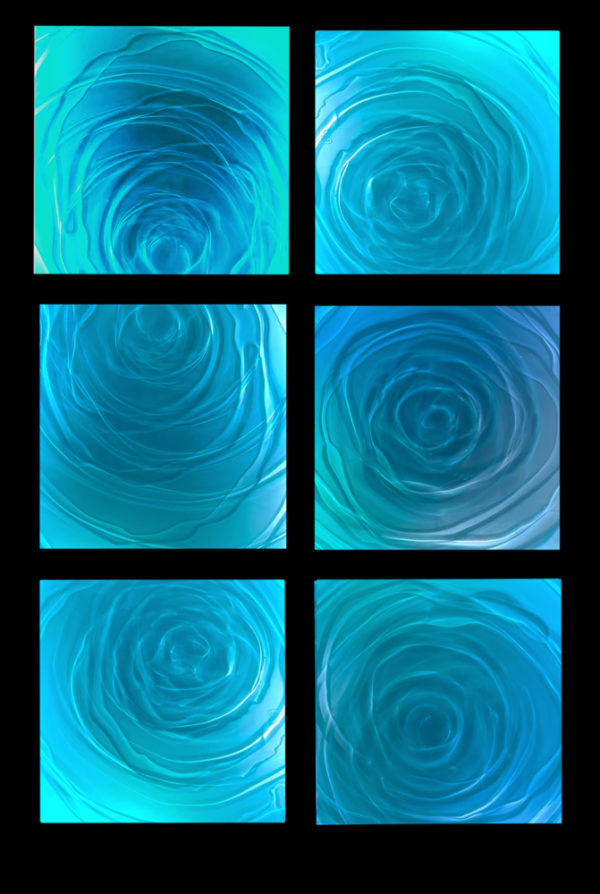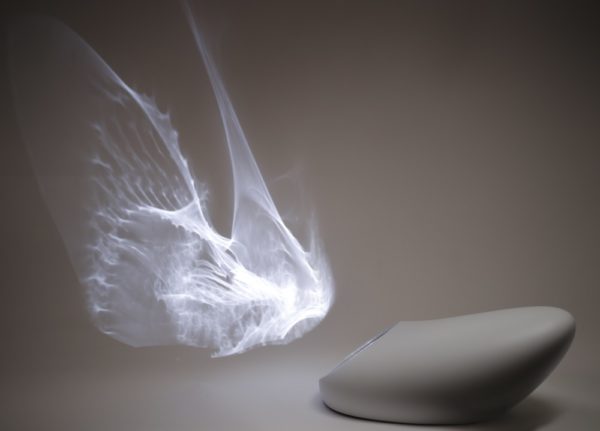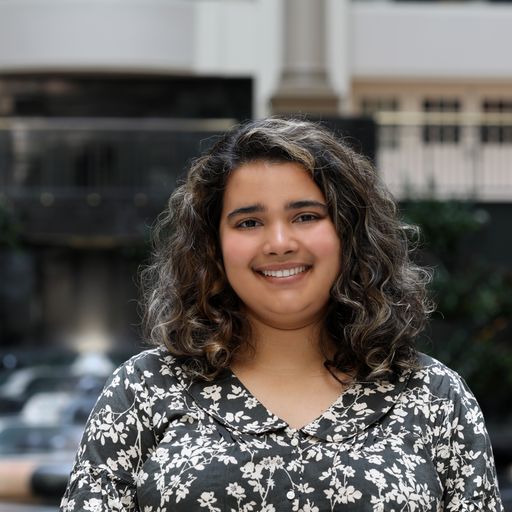While visiting a new immersive experience at HOT BED Gallery, I found myself mesmerized many times by the light and movement of the art piece I was looking at.
While some of the pieces at Waiting Room – Immersive Art for Wellbeing, were simply framed on the wall, others took up small rooms, using light and shadows to draw in the observer. The exhibit, centered around art that uses light, shadows and movement to create immersive art experiences, opened on Sept. 17.
The experience was curated by Lyn Godley, an artist and a professor of industrial design at Jefferson. Godley is working on research at The Jefferson Center of Immersive Arts for Health at Thomas Jefferson University, to see if immersive art, like the pieces in the Waiting Room exhibit, can be calming or have a positive impact on mental health.
Godley and the other artists featured in the exhibit, came up with pieces that are immersive to the observer, but small enough that they could be used in actual waiting rooms to help calm patients.
“Some of it is based off of distraction therapy, where if you give someone a headset, it kind of distracts them enough so that their stress level is reduced, they don’t need as much pain medication, you can get them through uncomfortable procedures simply because they’re being distracted,” she said. “And so the hypothesis is that can we create that kind of immersive environment without a headset.”
The exhibit features six artists, Aidan Fowler, Alyson Denny, Jessica Judith Beckwith, Philip Hart, Yael Erel and Godley. It also features four pieces from the winners of the 2022 Immersive Arts for Health Student Design Competition, where the Jefferson Center of Immersive Arts for Health invited designers around the world to submit pieces. Out of about 35 entries from 11 different countries, the top four winning entries were actually built and displayed in the exhibit.
Most of the pieces use lights and/or projectors to create certain effects. For example, one of Godley’s pieces is lit by a projector playing a video on each physical tile, creating movement on the piece. Godley used digital projection mapping so the projection only hit the intended tiles, she said.

This piece was created by Lyn Godley. (Courtesy Photo)
A piece by Erel was 3D printed and has a light shining through it. There is a piece of stainless steel with a textured surface on a turntable, and light reflects off that turning piece and projects the patterns onto the wall.

A piece by Yael Erel. (Courtesy Photo)
Fowler created a piece that uses a convex mirror to reflect flexible LED arrays. The final product made me feel like I was traveling through space.

A piece by Aidan Fowler. (Courtesy Photo)
Godley said she thinks incorporating technology into art helps make it interactive and allows people to engage with it.
“It’s really hard if you’ve got something that’s dynamic, not to go to it. It’s really hard if you’ve got something that lights up, not to be drawn to it, right?” she said. “And yes, we can do these huge immersive Van Gogh things right? But I think that there’s something to having something that is more intimate, right, and that can actually be used in spaces where it might have an impact.”
Godley said 10 years ago she did an art show where she used fiber optic lights woven in images of birds and people were drawn to it. She said they would sit on the floor and look at the pieces for long periods of time. And after doing some research, she found out that the lights she used were the same wavelength as lights used in light therapy. She reached out to Thomas Jefferson about their light research program and got to work.
“This field of dynamic work is really new and I know that we get lost in this stuff, everybody does right?” she said. “And it’s like, if we can use this in the same way that they use distraction therapy with a headset without using a headset.”
In an effort to continue this research and collect data, Godley said next to each of the major pieces, there is a QR code which is linked to a survey to collect input from visitors about their experience. She said they also want to start putting some of this art in actual waiting rooms to see what impact it has. The rooms are places people are stuck, she said, which presents and interesting position.
“It’s specifically for spaces where people are confined and so we’re not looking at patient rooms yet because that we need a whole other level of lighting stuff as far as circadian lighting,” she said. “But I think that for this show, if we can start the dialogue so that we can get people in and we can start collecting data. That’s the biggest thing for us.”
The exhibit is open through Nov. 19 at Hot Bed Gallery.
Sarah Huffman is a 2022-2024 corps member for Report for America, an initiative of The Groundtruth Project that pairs young journalists with local newsrooms. This position is supported by the Lenfest Institute for Journalism.Join the conversation!
Find news, events, jobs and people who share your interests on Technical.ly's open community Slack

Philly daily roundup: Jason Bannon leaves Ben Franklin; $26M for narcolepsy treatment; Philly Tech Calendar turns one

Philly daily roundup: Closed hospital into tech hub; Pew State of the City; PHL Open for Business

A biotech hub is rising at Philadelphia’s shuttered Hahnemann Hospital campus


